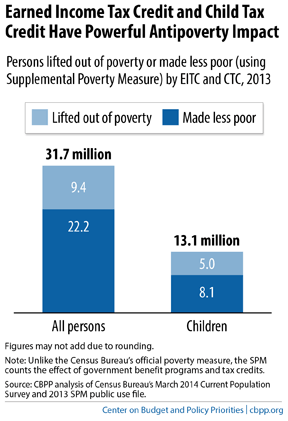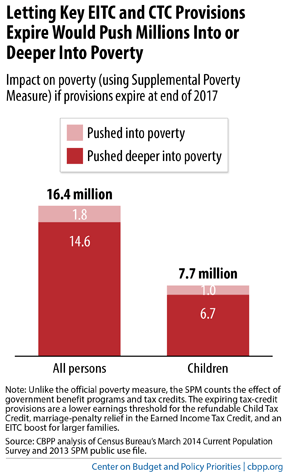
 The Child Tax Credit (CTC) and Earned Income Tax Credit (EITC) together lifted 9.4 million people out of poverty in 2013 and made 22.2 million others less poor, our analysis of Census data released yesterday show (see first graph.
The Child Tax Credit (CTC) and Earned Income Tax Credit (EITC) together lifted 9.4 million people out of poverty in 2013 and made 22.2 million others less poor, our analysis of Census data released yesterday show (see first graph.
Using Census’ Supplemental Poverty Measure (SPM), which includes taxes and non-cash benefits as well as cash income, our analysis shows how critical these tax credits are for low-income families. It also highlights the impact if policymakers let key provisions of the credits expire, as I explain below.
Each credit plays an important antipoverty role. The EITC lifted 6.2 million people out of poverty in 2013, including 3.2 million children. The CTC lifted 3.1 million people out of poverty, including 1.7 million children. Both credits acting together lifted some additional people out of poverty.
The EITC and CTC combined lift more children out of poverty than any other antipoverty program.
Unfortunately, critical provisions of the EITC and CTC are set to expire at the end of 2017. If that happens, 16.4 million people — including 7.7 million children — will fall into or deeper into poverty, we estimate based on the Census data. (See second graph.) Our interactive calculator lets you explore what’s at stake for low-income families if policymakers don’t act.